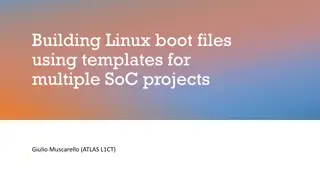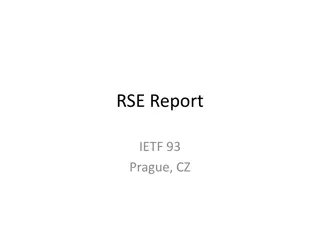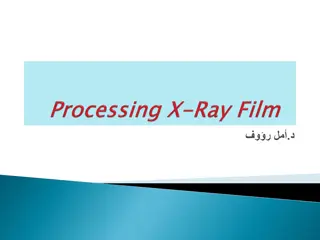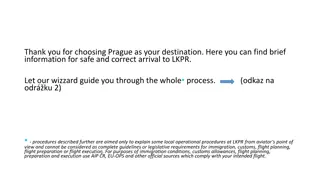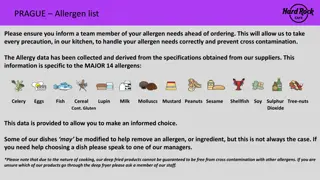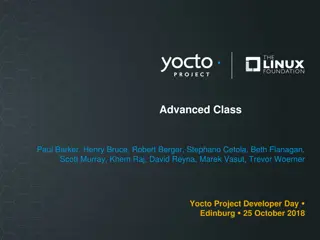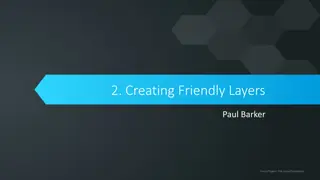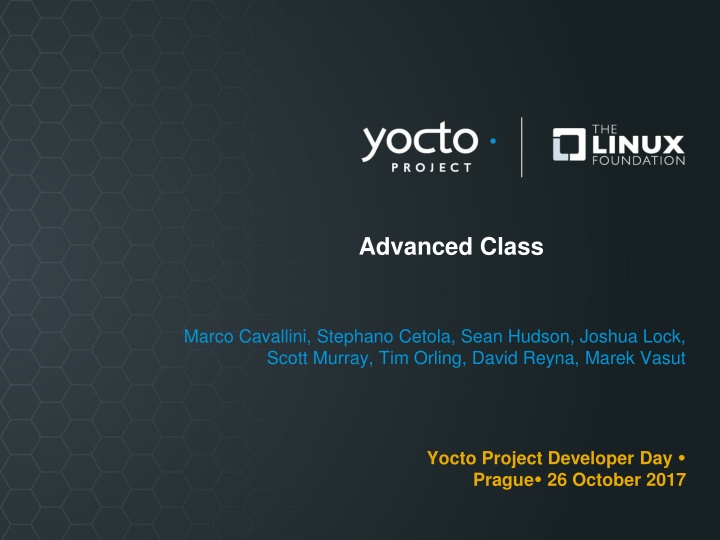
Yocto Project Developer Day Prague 2017 Agenda
Dive into the advanced Yocto Project development in the Developer Day event held in Prague. Explore topics covering kernel modules, Devtool, maintaining distributions, and more. Get hands-on experience with YP-2.4 (Rocko) and learn lab setup essentials for virtual server communication via SSH.
Download Presentation

Please find below an Image/Link to download the presentation.
The content on the website is provided AS IS for your information and personal use only. It may not be sold, licensed, or shared on other websites without obtaining consent from the author. If you encounter any issues during the download, it is possible that the publisher has removed the file from their server.
You are allowed to download the files provided on this website for personal or commercial use, subject to the condition that they are used lawfully. All files are the property of their respective owners.
The content on the website is provided AS IS for your information and personal use only. It may not be sold, licensed, or shared on other websites without obtaining consent from the author.
E N D
Presentation Transcript
Advanced Class Marco Cavallini, Stephano Cetola, Sean Hudson, Joshua Lock, Scott Murray, Tim Orling, David Reyna, Marek Vasut Yocto Project Developer Day Prague 26 October 2017
Advanced Class Class Content: https://wiki.yoctoproject.org/wiki/DevDay_Portland_2018 Requirements: Wireless SSH (Windows: e.g. putty ) Wireless Registration: TBD 2
Agenda The Advanced Class 9:00- 9:15 9:15- 9:30 9:30-10:15 10:15-10:30 10:30-11:15 11:15-12:00 12:00-12:45 12:45- 1:45 1:45- 2:15 2:30- 2:45 2:45- 3:15 3:15- 4:00 4:00- 4:30 4:30- 5:00 5:00- 5:30 Opening session Account setup , What's New Kernel Modules with eSDKs Morning Break DT overlays Devtool et. al. #1 Lunch Package Feeds Yocto Project - Rarely asked questions Afternoon Break Maintaining your Yocto Project Distribution Devtool et. al. #2 A User's Experience Recipe specific sysroots Forum, Q and A 3
Notes for the Advanced Class: The class will be given with YP-2.4 (Rocko) Wifi Access: SSID: <TBD> Password: <TBD> Your account s IP access addresses SSH (password devday ): ssh ilab01@devdayXXX.yoctoproject.org HTTP: devdayXXX.yoctoproject.org:8000 5
Yocto Project Dev Day Lab Setup The virtual host s resources can be found here: Your Project: "/scratch/poky/build Extensible-SDK Install: "/scratch/sdk/qemuarm Sources: "/scratch/src Poky: "/scratch/poky" Downloads: "/scratch/downloads" Sstate-cache: "/scratch/sstate-cache You will be using SSH to communicate with your virtual server. 6
FYI: How class project was prepared $ $ cd /scratch $ git clone -b rocko git://git.yoctoproject.org/poky.git $ cd poky $ bash $ ./scratch/poky/oe-init-build-env build $ echo "MACHINE = \ qemuarm\"" >> conf/local.conf $ echo "SSTATE_DIR = \ /scratch/sstate-cache\"" >> conf/local.conf $ echo "DL_DIR = \ /scratch/downloads\"" >> conf/local.conf $ echo "IMAGE_INSTALL_append = \" gdbserver openssh libstdc++ \ curl \"" >> conf/local.conf $ # Capture the build into a Bitbake/Toaster database $ . toaster start webport=0.0.0.0:8000 $ # Build the project $ bitbake core-image-base $ # When you are done ... $ . toaster stop $ exit 7
NOTE: Clean Shells! We are going to do a lot of different exercises in different build projects, each with their own environments. To keep things sane, you should have a new clean shell for each exercise. There are two simple ways to do it: 1. Close your existing SSH connection and open a new one -- or 2. Do a bash before each exercise to get a new sub-shell, and exit at the end to remove it, in order to return to a pristine state. 8
Activity One Yocto Project 2.5 (Sumo)
Yocto Project What is new in 2.4 Rocko Yocto Project 2.5 Theme: Stability Yocto Project Compliance 2.0 New website (yoctoproject.org) Meltdown/Spectre (IA) Automated Tooling Automated Testing Performance Improvements Kernel 4.15 Multi-kernel support in same image New machines (RiskV) Icecream/icecc distributed compiler Mason, Ninja 10
Activity Two Kernel Modules with eSDKs Marco Cavallini
Kernel modules with eSDKs Overview The Extensible SDK (eSDK) is a portable and standalone development environment , basically an SDK with an added bitbake executive via devtool. The devtool is a collection of tools to help development, in particular user space development. We can use devtool to manage a new kernel module: Like normal applications is possible to import and create a wrapper recipe to manage the kernel module with eSDKs. 12
Kernel modules with eSDKs Compiling a kernel module We have two choices Out of the kernel tree When the code is in a different directory outside of the kernel source tree Inside the kernel tree When the code is managed by a KConfig and a Makefile into a kernel directory 13
Kernel modules with eSDKs Pro and Cons of a module outside the kernel tree When the code is outside of the kernel source tree in a different directory Advantages Might be easier to handle modifications than modify it into the kernel itself Drawbacks Not integrated to the kernel configuration/compilation process Needs to be built separately The driver cannot be built statically 14
Kernel modules with eSDKs Pro and Cons of a module inside the kernel tree When the code is inside the same directory tree of the kernel sources Advantages Well integrated into the kernel configuration and compilation process The driver can be built statically if needed Drawbacks Bigger kernel size Slower boot time 15
Kernel modules with eSDKs The source code #include <linux/module.h> #include <linux/kernel.h> static int __init hello_init(void) { printk("When half way through the journey of our life\n"); return 0; } static void __exit hello_exit(void) { printk("I found that I was in a gloomy wood\n"); } module_init(hello_init); module_exit(hello_exit); MODULE_LICENSE("GPL"); MODULE_DESCRIPTION("Greeting module from the Divine Comedy"); MODULE_AUTHOR("Dante Alighieri"); 16
Kernel modules with eSDKs The Makefile obj-m += hellokernel.o SRC := $(shell pwd) all: $(MAKE) -C $(KERNEL_SRC) M=$(SRC) modules modules_install: $(MAKE) -C $(KERNEL_SRC) M=$(SRC) modules_install KERNEL_SRC is the location of the kernel sources. This variable is set to the value of the STAGING_KERNEL_DIR within the module class (module.bbclass) Sources available on https://github.com/koansoftware/simplest- kernel-module.git 17
Kernel modules with eSDKs Devtool setup Start a new Shell! Otherwise, the existing bitbake environment can cause unexpected results Here is how the eSDK was prepared for this class account: < DO NOT ENTER THE FOLLOWING COMMANDS : ALREADY EXECUTED > $ cd /scratch/working/build/tmp/deploy/sdk/ $ ./poky-glibc-x86_64-core-image-base-armv5e-toolchain-ext-2.4.sh \ -d /scratch/sdk/qemuarm -y This installed the eSDK into: /scratch/sdk/qemuarm 18
Kernel modules with eSDKs Overview Starting from now we are using the eSDK and not the project During this exercise we using two different machines The HOST containing the eSDK (providing devtool) The TARGET running the final qemuarm image Host Target eSDK:~$ root@qemuarm:~$ 19
Kernel modules with eSDKs Globalsetup Open two terminal windows and setup the eSDK environment in each one $ source /scratch/sdk/qemuarm/environment-setup-armv5e-poky-linux-gnueabi SDK environment now set up Additionally you may now run devtool to perform development tasks. Run devtool --help for further details 20
Kernel modules with eSDKs build the target image Open two terminal windows and setup the eSDK environment in each one $ devtool build-image This will create a new image into: /scratch/sdk/qemuarm/tmp/deploy/images/qemuarm 21
Kernel modules with eSDKs build the target image Run the image to check if everything is OK This will run the Qemu machine in the TARGET shell you were using Login using user : root (no password required) $ runqemu qemuarm nographic 22
Kernel modules with eSDKs Hooking a new module into the build Run the devtool to add a new recipe (on the HOST side) $ devtool add --version 1.0 simplestmodule \ /scratch/src/kmod/simplest-kernel-module/ This generates a minimal recipe in the workspace layer This adds EXTERNALSRC in an workspace/appends/simplestmodule_git.bbappend file that points to the sources In other words, the source tree stays where it is, devtool just creates a wrapper recipe that points to it Note: this does not add your image to the original build engineer s image, which requires changing the platform project s conf/local.conf 23
After the add Workspace layer layout $ tree /scratch/sdk/qemuarm/workspace/ /scratch/sdk/qemuarm/workspace/ appends simplestmodule_git.bbappend conf layer.conf README recipes simplestmodule simplestmodule_git.bb 24
Kernel modules with eSDKs Build the Module Build the new recipe (on the HOST side) $ devtool build simplemodule This will create the simplestmodule.ko kernel module This downloads the kernel sources (already downloaded for you): linux-yocto-4.12.12+gitAUTOINC+eda4d18ce4_67b62d8d7b-r0 do_fetch 25
Kernel modules with eSDKs Deploy the Module Get the target s IP address from the target serial console root@qemuarm:~# ifconfig In the eSDK (HOST) shell, deploy the output (the target s ip address may change) $ devtool deploy-target -s simplestmodule root@192.168.7.2 NOTE: the -s option will note any ssh keygen issues, allowing you to (for example) remove/add this IP address to the known hosts table 26
Kernel modules with eSDKs Deploy Details In the target (qemuarm), observe the result of deployment devtool_deploy.list devtool_deploy.sh ./ ./lib/ ./lib/modules/ ./lib/modules/4.12.12-yocto-standard/ ./lib/modules/4.12.12-yocto-standard/extra/ ./lib/modules/4.12.12-yocto-standard/extra/hellokernel.ko ./usr/ ./usr/include/ ./usr/include/simplestmodule/ ./usr/include/simplestmodule/Module.symvers ./etc/ ./etc/modprobe.d/ ./etc/modules-load.d/ NOTE: Successfully deployed /scratch/sdk/qemuarm/tmp/work/qemuarm-poky-linux-gnueabi/simplestmodule/ 100% 108 100% 1017 0.1KB/s 1.0KB/s 00:00 00:00 27
Kernel modules with eSDKs Load the Module In the target (qemuarm), load the module and observe the results root@qemuarm:~# depmod -a root@qemuarm:~# modprobe hellokernel [ 874.941880] hellokernel: loading out-of-tree module taints kernel. [ 874.960165] When half way through the journey of our life root@qemuarm:~# lsmod Module hellokernel 929 0 nfsd 271348 11 Size Used by 28
Kernel modules with eSDKs Unload the Module In the target (qemuarm), unload the module root@qemuarm:~# modprobe -r hellokernel [ 36.005902] I found that I was in a gloomy wood root@qemuarm:~# lsmod Module Size Used by nfsd 271348 11 29
Kernel modules with eSDKs automatic load of the module at boot In the target (qemuarm), edit the file below and add a new line containing the module name hellokernel root@qemuarm:~# vi /etc/modules-load/hello.conf < insert the following line and save > hellokernel Then reboot the Qemu machine and verify root@qemuarm:~# reboot 30
Activity Three DT overlays Marek Vasut
Device Tree Data structure describing hardware Usually passed to OS to provide information about HW topology where it cannot be detected/probed Tree, made of named nodes and properties Nodes can contain other nodes and properties Properties are a name-value pair See https://en.wikipedia.org/wiki/Device_tree DT can contain cycles by means of phandles ePAPR specification of DT: https://elinux.org/images/c/cf/Power_ePAPR_APPR OVED_v1.1.pdf 32
Device Tree Example arch/arm/boot/dts/arm-realview-eb-a9mp.dts /dts-v1/; #include "arm-realview-eb-mp.dtsi" / { model = "ARM RealView EB Cortex A9 MPCore"; [...] cpus { #address-cells = <1>; #size-cells = <0>; enable-method = "arm,realview-smp"; A9_0: cpu@0 { device_type = "cpu"; compatible = "arm,cortex-a9"; reg = <0>; next-level-cache = <&L2>; }; [...] &pmu { interrupt-affinity = <&A9_0>, <&A9_1>, <&A9_2>, <&A9_3>; }; 33
Problem Variable hardware DT started on machines the size of a little fridge HW was mostly static DT was baked into ROM, optionally modified by bootloader DT was good, so it spread First PPC, embedded PPC, then ARM There always was slightly variable hardware Solved by patching DT in bootloader Solved by carrying multiple DTs Solved by co-operation of board files and DT ^ all that does not scale 34
Problem Variable hardware 201x edition Come 201x, variable HW became easy to make: Cheap devkits with hats, lures, capes, FPGAs and SoC+FPGAs became commonplace => Combinatorial explosion of possible HW configurations Solution retaining developers sanity Describe only the piece of HW that is being added Combine these descriptions to create a DT for the system Enter DT overlays 35
Device Tree Overlays DT: Data structure describing hardware DTO: necessary change(s) to the DT to support particular feature Example: an expansion board, a hardware quirk,... Example DTO: /dts-v1/; /plugin/; / { #address-cells = <1>; #size-cells = <0>; fragment@0 { reg = <0>; target-path = "/"; __overlay__ { #address-cells = <1>; #size-cells = <0>; hello@0 { compatible = "hello,dto"; reg = <0>; }; }; }; }; 36
Advanced DTO example /dts-v1/; /plugin/; [...] fragment@2 { reg = <2>; target-path = "/soc/usb@ffb40000"; __overlay__ { [...] status = "okay"; }; }; fragment@3 { reg = <3>; target-path = "/soc/ethernet@ff700000"; __overlay__ { [...] status = "okay"; phy-mode = "gmii"; }; }; 37
DTO Hands-on Use pre-prepared meta-dto-microdemo layer meta-dto-demo contains: Kernel patch with DTO loader with ConfigFS interface Kernel config fragment to enable the DTO and loader Demo module Demo DTO source ( hello-dto.dts ) core-image-dto-microdemo derivative from core-image-minimal with added DTO examples and DTC 38
DTO Hands-on 1/2 Add meta-dto-demo to bblayers.conf BBLAYERS: $ ${EDITOR} conf/bblayers.conf Rebuild virtual/kernel and core-image-dto-microdemo $ bitbake -c cleansstate virtual/kernel $ bitbake core-image-dto-microdemo Start the new image in QEMU $ runqemu qemuarm nographic 39
DTO Hands-on 2/2 Compile DTO $ dtc -I dts -O dtb /lib/firmware/dto/hello-dto.dts > \ /tmp/hello-dto.dtb Load DTO $ mkdir /sys/kernel/config/device-tree/overlays/mydto $ cat /tmp/hello-dto.dtb > \ /sys/kernel/config/device-tree/overlays/mydto/dtbo Unload DTO $ rmdir /sys/kernel/config/device-tree/overlays/mydto 40
DTO encore DTOs can be used to operate SoC+FPGA hardware Done using FPGA manager in Linux fragment@0 { reg = <0>; /* controlling bridge */ target-path = "/soc/fpgamgr@ff706000/bridge@0"; __overlay__ { #address-cells = <1>; #size-cells = <1>; area@0 { compatible = "fpga-area"; #address-cells = <2>; #size-cells = <1>; ranges = <0 0x00000000 0xff200000 0x00080000>; firmware-name = "fpga/bitstream.rbf"; fpga_version@0 { compatible = "vendor,fpgablock-1.0"; reg = <0 0x0 0x04>; }; 41
Activity Four Devtool Part 1 Tim Orling
Activity Five On Target Development using Package Feeds Stephano Cetola
Package Feed Overview Tested package types: rpm and ipk For rpm packages, we now use DNF instead of smart Setting up a package feed is EASY stephano.cetola@linux.intel.com @stephano approves this message Signing your packages and package feed is doable Two major use cases: On target development (faster and smarter) In the field updates (YMMV) 44
On Target Development Better, Faster, Stronger Topics Setting up a package feed On target example AWS + Beaglebone Black Signing package feeds Keeping your code secure The future of package feeds 45
Setting up a package feed - Target Setup Install Package Management on the target EXTRA_IMAGE_FEATURES += " package-management " Set the correct package class PACKAGE_CLASSES = "package_rpm Customize the feed (optional) PACKAGE_FEED_URIS = http://my-server.com/repo PACKAGE_FEED_BASE_PATHS = "rpm PACKAGE_FEED_ARCHS = all armv7at2hf-neon beaglebone" Edit /etc/yum.repos.d/oe-remote-repo.repo (optional) enabled=1 metadata_expire=0 gpgcheck=0 46
Setting up a package feed Publish a repo $ bitbake core-image-minimal ... $ bitbake package-index ... $ twistd -n web --path tmp/deploy/rpm -p 5678 [-] Log opened [-] twistd 16.0.0 (/usr/bin/python 2.7.12) starting up. [-] reactor class: twisted.internet.epollreactor.EPollReactor. [-] Site starting on 5678 47
On Target Development Better, Faster, Stronger Topics Setting up a package feed On target example AWS + Beaglebone Black Signing package feeds Keeping your code secure The future of package feeds 48
Caveats Build server provided by employer Running bitbake world can take some time Serve the repo from your build machine Running `bitbake packge-index` + rsync can work too Talk to the people consuming your package feed 49
On Target Development Better, Faster, Stronger Topics Setting up a package feed On target example AWS + Beaglebone Black Signing package feeds Keeping your code secure The future of package feeds 50

